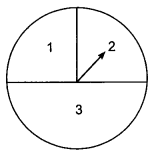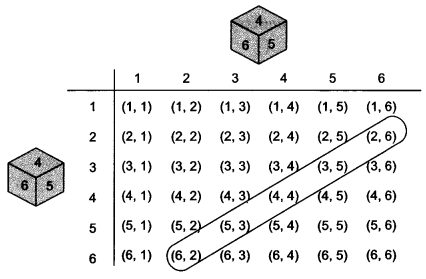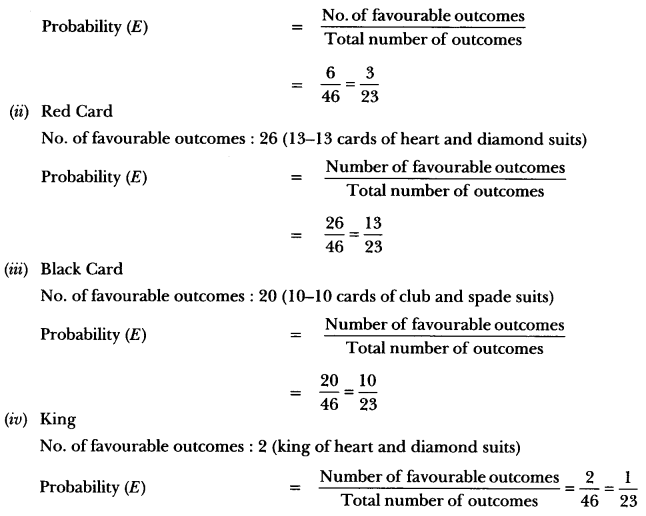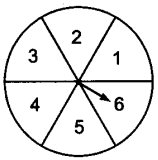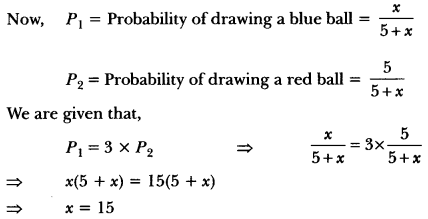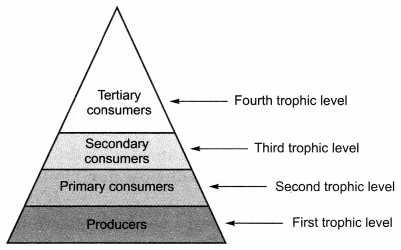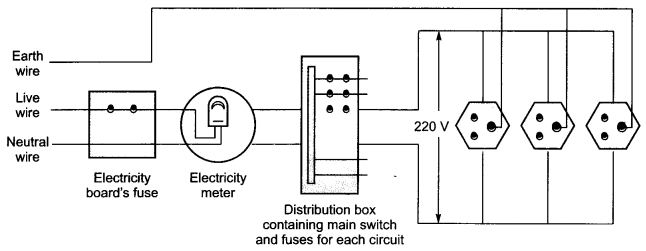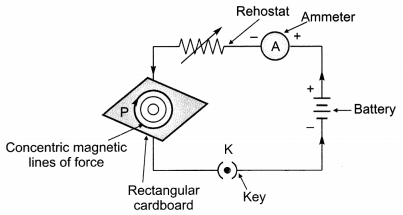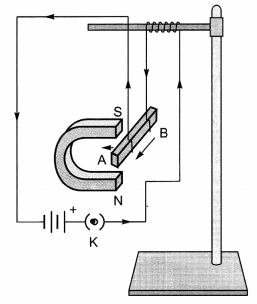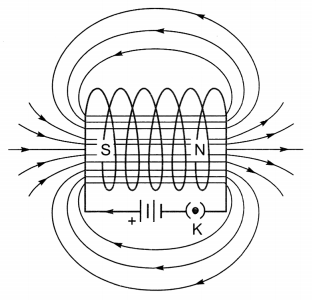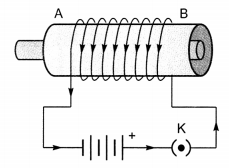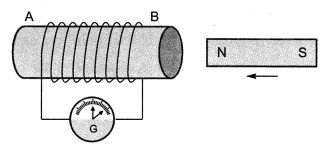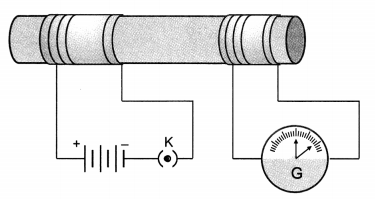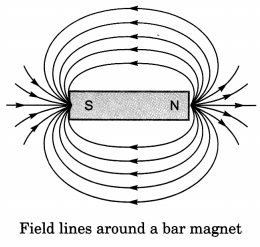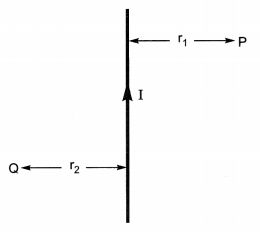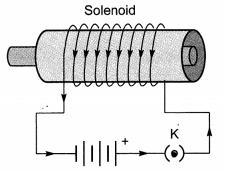In this page, we are providing Management of Natural Resources Class 10 Extra Questions and Answers Science Chapter 16 pdf download. NCERT Extra Questions for Class 10 Science Chapter 16 Management of Natural Resources with Answers will help to score more marks in your CBSE Board Exams.
Class 10 Science Chapter 16 Extra Questions and Answers Management of Natural Resources
Extra Questions for Class 10 Science Chapter 16 Management of Natural Resources with Answers Solutions
Extra Questions for Class 10 Science Chapter 16 Very Short Answer Type
Question 1.
List any two causes for deforestation taking place. (CBSE 2009)
Answer:
- Meeting the needs of growing population and using land for housing.
- Setting up industries.
- Converting into agricultural land.
Question 2.
Name any two forest products each of which is the basis for some industry. (CBSE 2009)
Answer:
- Timber wood: Used in making paper and furniture.
- Latex of rubber plant: In making tyres.
- Resins and gums: Used in paints and varnishes.
Question 3.
Mention any one negative effect of our affluent life style on the environment. (CBSE 2013, 2014)
Answer:
Chlorofluorocarbons used in refrigerators causing ozone hole. Carbon dioxide released on burning fossil fuels causing global warming.
Question 4.
List any two measures that you suggest for better management of water resources. (CBSE 2013, 2014)
Answer:
- Rainwater harvesting.
- Reusing the rinsed water from washed clothes for cleaning or mopping the house.
Question 5.
Give one example each from your daily life where the household waste can be effectively reused and recycled respectively. (CBSE 2013, 2014)
Answer:
Reuse: Empty plastic or glass bottles of jams and pickles
Recycle: Paper and empty polypacks of milk.
Question 6.
Name any two items which can be easily recycled but are generally thrown in the dustbins by us. (CBSE 2013, 2014)
Answer:
Paper, polypacks of milk, cold drink cans, etc.
Question 7.
Write the main objective of conservation of biodiversity. (CBSE 2013)
Answer:
To maintain ecological balance as loss of biodiversity leads to ecological instability.
Question 8.
Water is a valuable resource. List two ways that you would suggest every family member to save this resource. (CBSE 2014)
Answer:
- Prevent leakage from tap and ensure timely repairs.
- Reuse the rinsed water from washed clothes for watering plants in garden.
Question 9.
“We need to manage our resources”. List two reasons to justify this statement. (CBSE 2014)
Answer:
- For equitable distribution of resources so that all people get their benefits.
- Many resources are limited and would exhaust due to overexploitation.
Extra Questions for Class 10 Science Chapter 16 Short Answer Type I
Question 1.
List any four measures for conserving forests. (CBSE 2009)
Answer:
- Reduce the indiscriminate felling of trees.
- Create awareness among people for conservation of forests.
- Involving local people in management and conservation of forests.
- Reforestation by promoting silviculture.
- Providing protection to wildlife and endangered plants.
- Making strict laws for conservation of forests.
Question 2.
List any four advantages of water harvesting. (CBSE 2009)
Answer:
- Helps to recharge ground water.
- Underground water does not act as breeding ground of mosquitoes.
- Underground water does not get contaminated by human and animal wastes.
- Provides moisture to the soil and crops.
Question 3.
We often observe domestic waste decomposing in the by lanes of residential colonies. Suggest ways to make people realise that the improper disposal of waste is harmful to the environment. (CBSE 2013)
Answer:
- Create awareness through campaigns and road rallies on the issue.
- Impose penalty on those found throwing wastes on the road.
Question 4.
List two environment-friendly practices or habits which need to be followed by every member of a family / community. Explain how these practices will support the “save the environment” mission. (CBSE 2014)
Answer:
- Segregation of wastes into biodegradable and non-biodegradable and ensuring their reuse and recycling, if possible.
- Less use of fossil fuels and switching to environment friendly alternatives like use of solar energy and wind energy, etc.
Question 5.
What is meant by “Sustainable Management”? Why is reuse considered better than recycling? (CBSE 2015)
Answer:
The judicious and wise use of resources to cater to the current basic needs and preserving the resources for the needs of future generations is called as Sustainable Management.
Recycling requires more amount of energy and money while no energy is required for the reuse of materials. So, reuse is better than recycling.
Question 6.
List two advantages associated with water harvesting at the community level. (CBSE 2015)
Answer:
Water harvesting at community level is advantageous as:
- It recharges the ground water and helps in increasing the vegetation around the area.
- It mitigates the chances of droughts and floods. It also increases income of farmers by increasing agricultural production in rural areas.
Question 7.
Everyone of us can do something to reduce our personal consumption of various natural resources. List four such activities based on 3R’s approach. (CBSE 2013, 2015)
Answer:
- Reduce wastage of water by repairing leaking taps.
- Recycle the wastes like paper, empty polypacks of milk, etc.
- Reuse the aluminium cans of cold drink, glass bottles of pickles, etc.
- Reduce the use of fossil fuels by switching over to cleaner and renewable sources of energy like solar energy.
Question 8.
List two main causes of the pollution of water of the river Ganga. State how pollution and
contamination of river water prove harmful for the health of the people of neighbouring areas. (CBSE 2015)
Answer:
The two main causes of pollution of water of river Ganga are:
- Disposal of domestic and industrial effluents into it.
- Human activities like washing clothes, bathing, etc.
The harm to the people of neighbouring areas are:
- Leads to water-borne diseases like cholera, typhoid, etc.
- Harms the aquatic plants and animals in the water body.
Question 9.
List any two advantages associated with water stored in the ground. (CBSE 2015)
Answer:
The water stored in ground
- does not evaporate
- does not act as breeding ground of mosquitoes.
Question 10.
What steps have been taken by West Bangal Government to protect badly degraded sal forests?
Answer:
By the efforts of A.K . Banerjee in Arabari forest range of Midnapore district the badly degraded sal forests were revived with the involvement and participation of local villagers. The villagers were in return given employment and were allowed to collect firewood and fuelwood at a nominal fee.
Question 11.
Why are forests considered ‘biodiversity hot spots’? What would happen due to loss of biodiversity?
Answer:
Wide variety of plants, animals, microorganisms are found in forests. So they act as biodiversity hotspots. Loss of biodiversity disturbs ecological balance.
Question 12.
Prepare a list of five items that you use daily in the school. Identify from the list such items that can be recycled. (NCERT Exemplar)
Answer:
Paper, Plastic pencil box or Tiffin box, Steel spoon, Scale, Eraser.
Question 13.
List two advantages associated with water harvesting at the community level. (NCERT Exemplar)
Answer:
- Recharging of wells leads to increase in ground water level.
- Ground water does not evaporates and keeps the layers of soil above it moist.
- The water stored during rainy season can be used when required.
Question 14.
What measures would you take to conserve electricity in your house? (NCERT Exemplar)
Answer:
- Switch off the fans and lights when they are not required.
- Use solar water heaters during winters.
- Use LED lights instead of normal bulbs or tube lights.
Question 15.
Although coal and petroleum are produced by degradation of biomass, yet we need to conserve them. Why? (NCERT Exemplar)
Answer:
It takes millions of years to form coal and petroleum and their reserves are limited. Due to this they would get exhausted very soon if utilised at a faster rate. Hence, they should be conserved for the needs of the future generations too.
Question 16.
Suggest a few measures for controlling carbon dioxide levels in the atmosphere. (NCERT Exemplar)
Answer:
- Plant more and more trees.
- Using cleaner fuels like CNG.
- Make manure from litter instead of burning it.
- The harmful effluents from industries should be treated before discharging them into the atmosphere.
- Less use of fossil fuels.
Extra Questions for Class 10 Science Chapter 16 Short Answer Type II
Question 1.
What are natural resources? State two factors that work against an equitable distribution of these resources. (CBSE 2009)
Answer:
The stock of nature such as air, water, soil, minerals, forests and wildlife are called as natural resources. The two factors that work against their equitable distribution are
- Overuse of resources and their overexploitation.
- Human activities like cutting of trees, hunting, etc. which disturbs ecological balance.
Question 2.
What is water harvesting? Mention any two water harvesting structures. (CBSE 2009)
Answer:
Capturing rainwater where it falls or capturing the run-off water so that it can be made available throughout the year for various purposes is called water harvesting.
Some traditional water harvesting structures are:
- Khadins, tanks and nadis in Rajasthan
- Kulhs in Himachal Pradesh.
Question 3.
How can we as an individual help in reducing the use of fossil fuels? Mention two ways.
Answer:
We can reduce the use of fossil fuels by .
- Switching over to renewable sources of energy like solar energy, wind energy, etc.
- Use public transport instead of private vehicles,
- Ensure proper servicing and tuning of vehicles to increase fuel efficiency.
Question 4.
What is meant by exploitation of resources with short aims? List its four advantages. (CBSE 2009)
Answer:
Use of resources for the benefit of a few rich and powerful people in order to fulfil short-term aims and the present needs is called exploitatation of resources with short aims. Its advantages are:
- Maximises profit without any accountability.
- Increases growth rate of economy for that duration.
- They fulfil the needs of the present generation.
- Ensures availability of a variety of raw materials for human use.
Question 5.
(a) List any two disadvantages of using fossil fuels for the production of energy.
(b) Give two examples each of the following:
(i) Renewable sources of energy. 3
(ii) Non-renewable sources of energy. (CBSE 2011)
Answer:
(a) Disadvantages of using fossil fuels:
- The oxides of nitrogen and sulphur released on burning fossil fuels reacts with water vapour in air and falls in the form of harmful acid rain.
- Carbon dioxide released on burning them causes greenhouse effect which leads to global warming.
- Carbon monoxide releases on their combustion is toxic and can be fatal.
- They are limited, non-renewable resources which may get exhausted soon.
(b) (i) Examples of renewable sources of energy are
- Solar energy
- Wind energy
(ii) Examples of non-renewable sources of energy are
- Petrol
- Diesel
Question 6.
Dams are useful for the society but there is public opposition to the construction of large dams. Justify your answer by giving three problems. (CBSE 2011)
Answer:
- Social problems: Large number of human settlements gets submerged in water during construction of dam.
- Environmental problems: Loss of vast variety of flora-fauna due to deforestation and biodiversity loss during construction of dams.
- Economic problems: Huge amount of public money is spent without getting proportionate benefits from such dams.
Question 7.
List the products of combustion of fossil fuels. What are their adverse effects on the environment? (CBSE 2012)
Answer:
Carbon dioxide, sulphur dioxide, nitrogen oxide, water, carbon monoxide are the products of combustion of fossil fuels.
Their adverse effects on the environment are:
- Carbon dioxide is a greenhouse gas which leads to global warming.
- Oxides of nitrogen and sulphur react with water vapour present in air to form acids which fall in the form of acid rains and harms life.
- Carbon monoxide is a toxic gas which creates respiratory problems.
Question 8.
What is environmental planning? List any four human activities that are directly connected to influence the environment of a region.
Answer:
Various steps taken to reduce pollution and conserve natural resources for long term use is called environmental planning. It is necessary to maintain ecological balance. Human activities that are directly connected to influence the environment of a region are:
- Large scale deforestation for agricultural land or housing needs of growing population.
- Discharge of domestic wastes and industrial effluents into water bodies.
- Excessive use of fossil fuels which causes air pollution.
- Excessive use of non-biodegradable materials, plastics, detergents, etc. which harm the environment.
Question 9.
What is the full form of GAP? Why was it started? What is the main cause of abundant coliform in the river Ganga?
Answer:
GAP-Ganga Action Plan:
GAP was started to ensure the cleaning of water of river Ganga and reduce the pollution levels of Ganga. Main cause of abundant coliform bacteria in river Ganga is due to high amount of organic wastes disposed in the form of unburnt corpses into the water.
Question 10.
In a village in Karnataka, people started cultivating crops all around a lake which was always filled with water. They added fertilisers to their field in order to enhance the yield. Soon they discovered that the waterbody was completely covered with green floating plants and fishes started dying in large numbers.
Analyse the situation and give reasons for excessive growth of plants and death of fish in the lake. (NCERT Exemplar)
Answer:
The fertilisers containing high amount of phosphates and nitrates got carried down by rainwater into the lake which led to nutrient enrichment of water in lakes. This caused excessive growth of aquatic plants which ultimately covered the whole surface of the water body. Due to this insufficient amount of light entered the water body and levels of oxygen became low. This led to death of fishes in the water body.
Question 11.
(a) Locate and name the water reservoirs in Figures (a) and (b).
(b) Which has an advantage over the other and why?
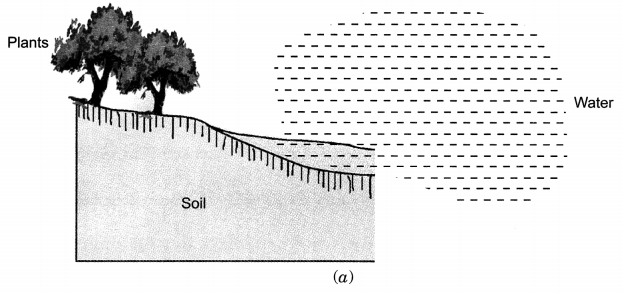

Answer:
(a) The water reservoir in Figure (a) is a pond.
The water reservoir in Figure (b) is an underground water body.
(b) Figure (b) has more advantage than Figure (a), because the advantages of water stored in the ground are many. For example
- It does not evaporate.
- Spreads out to recharge wells and provides moisture for vegetation over a wide area.
- Does not provide breeding grounds for mosquitoes like stagnant water.
Extra Questions for Class 10 Science Chapter 16 Long Answer Type
Question 1.
What is a dam? Write two main advantages and two ill-effects of constructing big dam. (CBSE 2009)
Answer:
Dams are constructed across the rivers to regulate the flow of water and store the huge amounts of water in large reservoirs. This ensures the supply of water for irrigation and other purposes.
Advantages of Dams:
- Ensures water availability for irrigation of fields.
- Water can be used to generate electricity in Hydel power stations by using turbines.
Disadvantages of dams:
- Social problems: Human settlements get submerged under water.
- Environmental problems: Large scale loss of biodiversity and deforestation.
- Economic problems: Huge amount of public money utilised in their construction but benefits are not proportionate.
Question 2.
Define Reduce, Recycle and Reuse with reference to the environment. Which is better strategy among recycle and reuse? Why?
Answer:
Recycle: Recycling wastes like paper, plastic and glass to obtain materials for use.
Reduce: Minimise the use of natural resources.
Reuse: Encourage the use of things again and again instead of throwing them away.
Reuse is better than recycling.
Recycling requires large amount of energy and money whereas reuse does not require any energy. So, reuse is better than recycling.
Question 3.
Prepare a list of five activities that you perform daily in which natural resources can be conserved or energy utilisation can be minimised. (NCERT Exemplar)
Answer:
- Taking a bus, public transport or walking/cycling instead of a private vehicle.
- Using LED bulbs in homes instead of normal bulbs.
- Talking the stairs instead of lift.
- Using fan and light only when required.
- Using solar water heating devices.
Question 4.
Is water conservation necessary? Give reasons. (NCERT Exemplar)
Answer:
The total amount of fresh water is more than enough to meet the needs of human beings. But due to its uneven distribution, wide seasonal, as well as yearly fluctuation in rainfalls and wastage, water shortage is a chronic problem inmost parts of the world.
Management of Natural Resources HOTS Questions With Answers
Question 1.
What is meant by ‘Sustainable Management’? The environmentalists are insisting upon sustainable natural resources management. State its four advantages. (CBSE 2009)
Answer:
The judicious and wise use of resources to cater to the current basic needs and preserving the resources for the needs of the future generations is called sustainable management. Its advantages are:
- Prevents exploitation of resources for short term gains and targets the long term aims.
- Ensures equitable distribution of resources.
- Minimises the harm caused to the environment.
- Ensures the availability of resources for their use by the future generations in order to fulfil their needs.
Question 2.
With the help of an example show that ‘reuse’ strategy is better than recycling. (CBSE 2010)
Answer:
Recycling involves use of energy and money whereas no energy is used in ‘reuse’, so reuse is better than recycling.
For example,
The plastic bottles can be recycled by heating them and remoulding them into different shapes. But, this would require the use of energy resources for getting heat required for remoulding plastic. Also, cost of the energy resource will have to be met. Instead of this, the plastic bottles can be reused for different purposes which will save both money and energy.
Question 3.
Prejudice against traditional use of forests areas has no basis. Explain with an example.
Answer:
Local people were not allowed by the Government to use the forests in the traditional ways they had been using for generations. This has led to harmful effects on the sustainability of forests and its resources. A striking example of such case is: Nomadic shepherds used to take their sheep for grazing in the alpine meadows of Great Himalayan Peak during summers. But when they were not allowed to take sheep for grazing, it was seen that grass in the region grew very tall and then fell over preventing fresh growth, which proved harmful for the biodiversity of the region.
Question 4.
Suggest a few useful ways of utilising waste water. (NCERT Exemplar)
Answer:
Ways of utilising waste water are:
- Ground water level can be recharged.
- Can be used for construction purposes.
- Washing cars and watering gardens by treated waste water.
- Organic wastes in waste water may be used as fertilisers for crops.
Question 5.
What is the importance of forest as a resource? (NCERT Exemplar)
Answer:
Forest are important as a resources because they
- Provide shelter and food to wildlife.
- Maintain balance of oxygen and carbon dioxide in the atmosphere.
- Increase water holding capacity of soil and prevent soil erosion.
- Help to regulate the water cycle.
- Products like fuel, wood, timber, paper, etc. are obtained.
- Products like fruits, resins, gums, essential oils, etc. used in various industries are obtained.
Question 6.
Why are the Arabari forests of Bengal known to be a good example of conserved forest? (NCERT Exemplar)
Answer:
Due to efforts of forest officer A.K. Banerjee, the Sal forests in Arabari forests of West Bengal were revived with the active participation of the local people in their conservation. In return the villagers were given employment in both silviculture and harvesting operations, 25 per cent of the final harvest, and allowed fuel wood and fodder collection on payment of a nominal fee.
By 1983, due to the active and willing participation of the villagers, the previously worthless Sal forests in Arabari forest range of Midnapore district Underwent a remarkable recovery and were valued ₹ 12.5 crores.
Extra Questions for Class 10 Science Chapter 16 Value Based Questions
Question 1.
An environmentalist on visit to your school suggested the use of three R’s to save the environment. Explain what he meet by three R’s and how would you follow his advice at home. What values will be evident in this? (CBSE 2009)
Answer:
The three R’s are Reduce, Recycle and Reuse.
Reduce: It means to minimise the use of natural resources.
Recycle: It means to recycle the wastes to obtain materials again for use.
Reuse: It means to use the things again and again instead of throwing them way.
We would follow his advice at home by reducing use of fossil fuels, recycle the non-biodegradable materials and reuse the plastic and glass bottles of jams and pickles.
The values evident are: Awareness, Eco-friendly care for Nature and environment, Scientific aptitude.
Question 2.
Subhash has started the project of constructing his building. His architect suggested that he should add a system of rainwater harvesting in his building. He thought by adopting water harvesting in his project, he can solve his water crisis problem in the years to come.
(i) Is Subhash correct in his approach? Support your answer.
(ii) Give the values shown by Subhash. (CBSE 2012)
Answer:
(i) Yes, Subhash is correct in adopting water harvesting in his project because the rainwater falling on the roof can be collected and used for recharging the ground water instead of flowing into drains. This would increase the ground water as it neither evaporates nor acts a breeding ground for mosquitoes like the water stored on surface. It also does not get contaminated by the human or animal wastes.
(ii) The values shown by Subhash:
- Scientific aptitude, Decision-Making
- Environment Friendly, Care for Nature.
